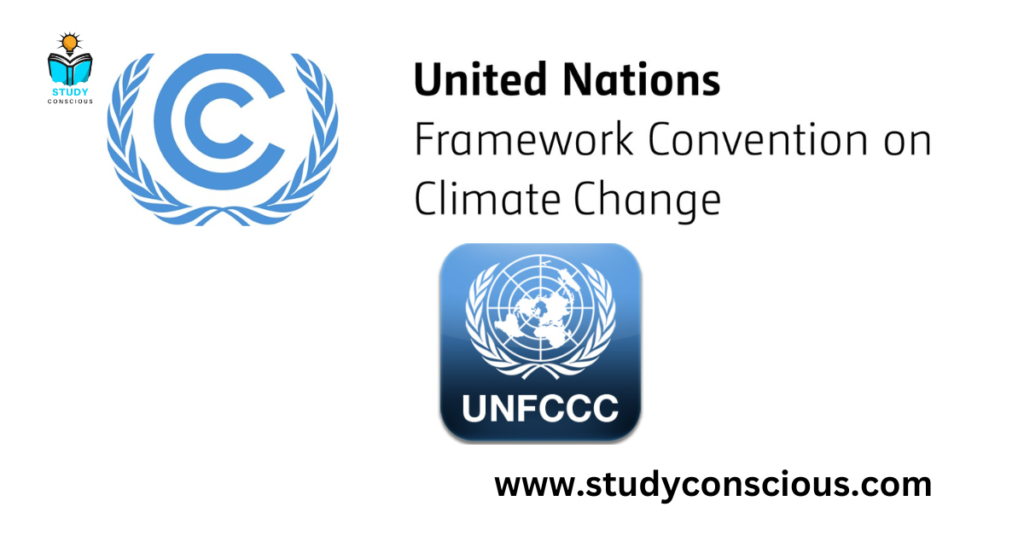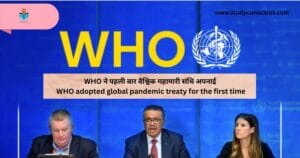The acronym refers to the 16th session of conference of parties, of the united nations framework convention on climate change (UNFCCC). The main target of UNFCCC was to address the global problems relating to climate specifically the effects of global warming on an international level. To bring the countries together with better coordination and cooperation and to address the problems, set targets and to monitor the achievements COP was formed. COP 16 was successfully organized after the failure of COP 15. The venue of COP 16 was Cancun, Mexico.
Key Highlights of COP 16
- The Cancun Agreements:
- Temperature Goal: COP 16 established an objective of limiting global warming to below 2°C above pre-industrial levels. It also recognized the potential need to consider limiting warming to 1.5°C, especially for vulnerable countries, including small island nations that face severe risks from sea-level rise.
- Alarming sign for environment: While COP 16 did not deliver a binding global treaty, it saw numerous countries commit to voluntary emissions reduction targets and pledges. These commitments were logged as part of the agreements, representing a step towards global accountability.
- Green Climate Fund (GCF):
- The GCF was designed to financially assist developing countries in mitigation (reducing greenhouse gas emissions) and adaptation (preparing for and minimizing climate impacts).
- Funding Goal: Developed countries agreed to a goal of mobilizing $100 billion annually by 2020, with funds sourced from both public and private sectors.
- The GCF has since become one of the primary channels for climate finance, though there have been ongoing challenges in meeting funding targets.
- REDD+ Mechanism:
- REDD+ aims to address deforestation and forest degradation, which are significant sources of global emissions, particularly in developing countries.
- The Cancun Agreements established safeguards to ensure that REDD+ programs respect the rights of indigenous people, contribute to biodiversity conservation, and uphold environmental integrity.
- Technology Transfer:
- The creation of a Technology Mechanism was intended to support the development and transfer of environmentally sound technologies.
- This mechanism included the Technology Executive Committee and the Climate Technology Centre and Network (CTCN), tasked with enhancing cooperation and facilitating technology access for developing nations.
- Adaptation Framework:
- COP 16 highlighted adaptation as an equal priority to mitigation, which was particularly important for countries most vulnerable to climate impacts, such as droughts, floods, and storms.
- The Cancun Adaptation Framework was established to assist countries in developing their resilience and adaptive capacity through technical and financial support.
- MRV (Measurement, Reporting, and Verification):
- One of the most challenging aspects of international climate agreements is ensuring that all countries report and verify their climate actions transparently.
- COP 16 introduced guidelines for MRV systems, creating a pathway for future accountability mechanisms under the UNFCCC.
key acronyms related to COP 16:
- COP – Conference of the Parties
- UNFCCC – United Nations Framework Convention on Climate Change
- GCF – Green Climate Fund
- REDD+ – Reducing Emissions from Deforestation and Forest Degradation (with “+” for conservation, sustainable management, and enhancement of forest carbon stocks)
- MRV – Measurement, Reporting, and Verification
- CTCN – Climate Technology Centre and Network
- IPCC – Intergovernmental Panel on Climate Change
- NDC – Nationally Determined Contribution
About UNFCCC
The United Nations Framework Convention on Climate Change (UNFCCC) is an international environmental treaty, adopted at the Earth Summit in Rio de Janeiro in 1992, with the main objective of stabilizing greenhouse gas (GHG) concentrations in the atmosphere to prevent dangerous human-caused interference with the climate system. The UNFCCC laid the foundation for international efforts to address climate change, bringing countries together to negotiate, set targets, and monitor progress in limiting global temperature rise.

Objectives of the UNFCCC
The treaty’s primary objectives are:
- Prevent Dangerous Climate Change: The UNFCCC aims to stabilize GHG concentrations in the atmosphere to prevent severe impacts on the climate.
- Promote Sustainable Development: The convention emphasizes that actions to combat climate change should also support economic development, especially in developing countries.
- Global Equity and Responsibility: It adheres to the principle of “common but differentiated responsibilities and respective capabilities” (CBDR-RC), recognizing that developed nations have historically contributed more to climate change and thus bear greater responsibility in addressing it.
Structure and Components
- Conference of the Parties (COP): The COP is the governing body of the UNFCCC, where signatory nations (called Parties) meet annually to assess progress, update goals, and negotiate climate agreements. Each COP results in an outcome document with decisions, commitments, and guidelines.
- Annexes Under the Convention:
- Annex I: Developed countries and economies in transition (such as countries in Eastern Europe). These nations have stronger emissions reduction commitments.
- Annex II: A subset of Annex I countries, primarily wealthy, developed nations, that are also expected to provide financial and technological support to developing countries.
- Non-Annex I: Developing countries, with fewer obligations to reduce emissions but often the most vulnerable to climate impacts.
- Key Protocols and Agreements:
- Kyoto Protocol: Adopted in 1997, this was the first legally binding agreement under the UNFCCC, mandating developed countries to reduce their GHG emissions. It set binding targets for 37 industrialized countries but excluded developing countries.
- Paris Agreement: Adopted at COP 21 in 2015, it marked a significant shift, aiming to limit global warming to well below 2°C, with efforts to limit it to 1.5°C. The Paris Agreement introduced Nationally Determined Contributions (NDCs), where each country submits voluntary climate action plans that are updated every five years.
- Financial Mechanisms:
- Green Climate Fund (GCF): Established to help finance mitigation and adaptation efforts in developing countries, with a target of $100 billion annually by 2020.
- Global Environment Facility (GEF): Supports projects related to climate action, biodiversity, and other environmental areas.
- Technology and Capacity-Building:
- Climate Technology Centre and Network (CTCN): Facilitates technology transfer and helps developing countries access climate-friendly technologies.
- Capacity-Building Programs: Aimed at strengthening the ability of countries to implement climate actions effectively.











